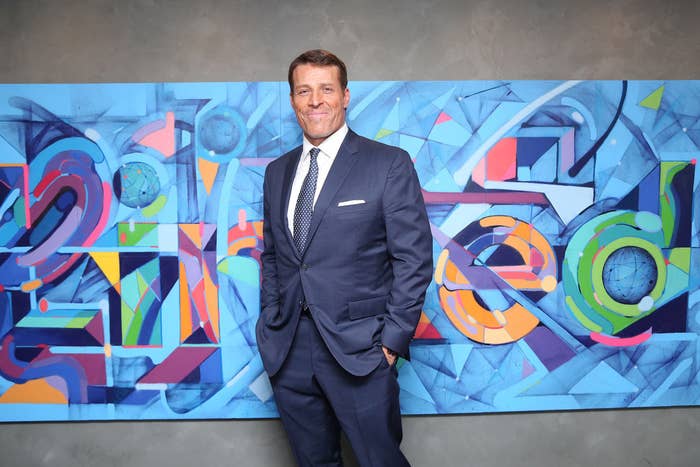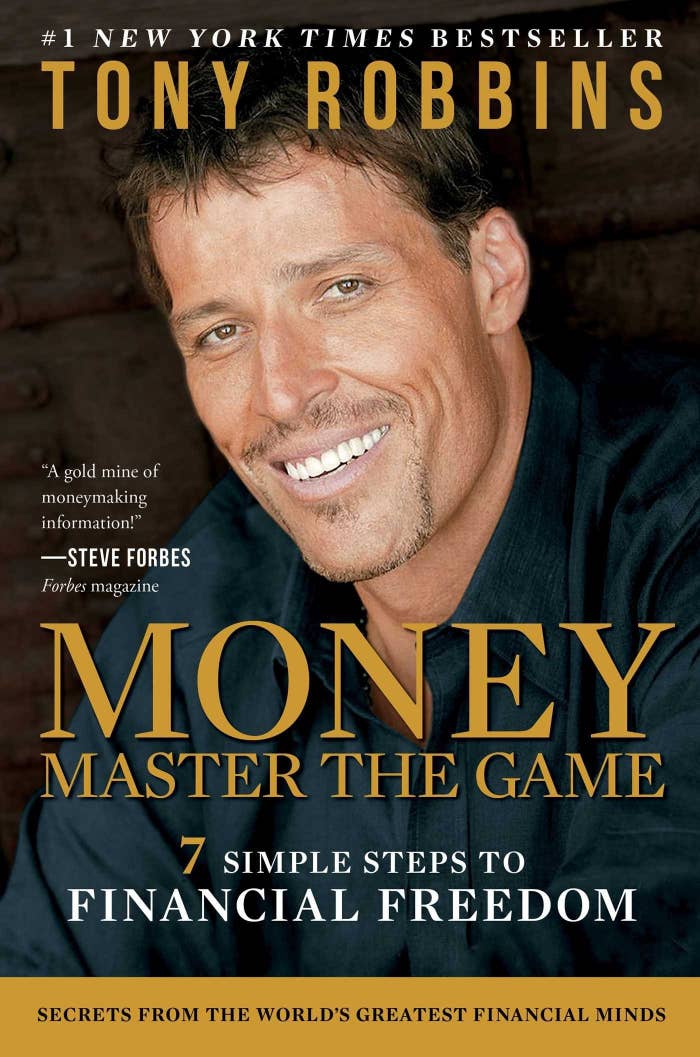
America's tallest and most successful success coach has a new mission: shaking up the 401(k) system. Tony Robbins, more famous for his multiday fire walking seminars, is taking steps toward becoming America's personal finance guru.
Since publishing Money: Master the Game, 7 Simple Steps to Financial Freedom, which collected finance advice gleaned from a who's who of big-deal money men — Yale endowment head David Swensen, billionaire hedge fund manager and meditation advocate Ray Dalio — he has taken a stake in America’s Best 401k, a company that helps people see how much they're paying in fees in their 401(k) provider, and helps employers set up their own plan.
In an interview with BuzzFeed News, Robbins spoke at length about how 401(k) plans report their costs, and why investment portfolios shouldn't just be diversified across assets (like stocks and bonds), but also across risks. This "risk parity" approach showed up in his book as a simplified recommendation from Dalio, the head of the world's largest hedge fund, whose assets have ballooned to over $100 billion thanks to his "All Weather" strategy and made him one of the richest men in the world.
After Robbins' book came out and took its place atop the New York Times best-seller list — a fact he makes sure to remind me of — he encountered some criticism from the financial community. One investment portfolio he recommended, which he got from Dalio and called the "All Wealther" option, recommended allocating a sizable portion of your retirement savings to commodities and bonds.
Some critics, like Barry Ritholz, who runs an asset management firm and writes for Bloomberg View, criticized Robbins for recommendations that made sense on the back of a long boom in commodities and bonds that is unlikely to continue. "People tend to assume that what just happened will likely to keep happening," Ritholtz wrote. "The all-weather portfolio is a biased sample, form-fitted to have done well over recent decades."
Robbins brushes off such criticism, saying he did "180 interviews" and that his critics "all know each other" and besides, don't manage very much money (at least compared to Ray Dalio and David Swensen.)
Either way, Robbins insists he isn't becoming an investment adviser and says the portfolio was just one of several he shared after speaking with dozens of veteran money managers. Robbins ruled out going down the advisory path late last year, telling ThinkAdvisor that "I’m not looking to enter the industry. I have no desire."
"Some advisors think I’m coming to take over their industry. They’ve taken pot shots. I have zero desire to take their business," he told the site. "It’s not even slightly where I am. I’m a coach."

At America's Best 401k, the focus is on the fees charged on retirement savings plans. On the website, savers can do a quick-and-dirty fee analysis of their company's 401(k) plan, and then more extensive comparisons between it and other plans. The company also works with employers, helping them set up and manage 401(k) plans of their own.
Robbins is working with Tom Zgainer, who had worked on a similar project with the software-based financial advisory company Personal Capital. That project was eventually dropped after Personal Capital chose to focus on its personal investment products.
A few days after Zgainer left Personal Capital in 2013, he said he got a call from Robbins, who had a problem with the 401(k) plans at his 12 companies. The plans had been sold to Robbins by an insurance company and were "just getting gouged in fees," Zgainer said.
After a 45-minute meeting that turned into a four-hour one at the Wynn in Las Vegas, Zgainer began to accompany Robbins to events to talk about the 401(k) system. Last year he started to formally partner with Robbins as he was preparing his book.
"I can use my social media platform and my influence in the business community," Robbins told Zgainer. "Let’s go out there an disrupt a 30-year industry that's just enjoying ripping off savings."
Each time America's Best gets a company to switch to one of its plans, it stands to tap into a lucrative long-term revenue source — the very fees the company helps employees take a closer look at. Those fees look low at first glance, but add up over time, both for the companies collecting them and the people whose savings are being charged.
Over 20 years, $100,000 investment in a fund earning 4% yearly returns would grow to about $210,000 if charged an annual fee of 0.25%, according to the Securities and Exchange Commission. If that annual fee rose to 1%, it would grow to about $180,000. A difference of just 75 basis points, in this case, costs savers $30,000.
Zgainer said none of America's Best's clients pay more than 0.75% in annual fees, even as “most plans” his company reviews from other providers charge 1.45% to 2.5%.

Investment fees are already falling, with or without the help of Tony Robbins. Investors — from individuals to large institutions — are seeking out lower fee funds and investments that give them broad exposure to the market rather than individual stocks picked by a fund manager. The average fee paid by 401(k) plans investing in an equity mutual fund has fallen significantly, according a study from the Investment Company Institute, from 0.77% in 2000 to 0.54% in 2014.
The industry looks after $4.6 trillion in savings, the ICI said. Of that, 63% is invested in mutual funds, and 60% of that goes to funds that buy stocks. Bigger 401(k) plans are cheaper for their customers: A study done for the ICI by Deloitte found that the median "all-in" fee for plans with assets from $1 million to $100 million was 1.27%, while plans with over $500 million in assets have a median all-in fee of 0.37%.
Zgainer said that when he can get employees to see all the fees being charged to their 401(k), "people are stunned" — but the tricky part is turning a stunned individual worker into a company taking the plunge and switching 401(k) plans.
America's Best is getting 65 to 70 new plans switching over each month, Zgainer said, and expects to be getting 100 plans a month by the end of the year, "which will make us one of the fastest growing solutions in the United States."
"We know we’re a tiny little pinprick in the whole scheme of things," he said. "There’s 540,000 plans, but if we do 2,000 it’s still a significant fee change ... We need to get this on the lips of everybody in the United States."
That includes, for example, when Zgainer and Robbins spoke at a recent dental conference. Zgainer says 750 of the 3,000 dentists there asked for a fee comparison.
Although the Department of Labor has begun mandating extensive fee disclosures by 401(k) plans, few people know how to access the disclosure, let alone how to read them and then their get their companies to change plans or negotiate for a better one.
But while America's Best provides an infrastructure for employees to push for their companies' to go to a cheaper plan, it still relies on a very Tony Robbins–esque message: that individuals really can influence a massive financial system that is best at rewarding itself.
"Transparency wins," he said, "if you make it easy to act."
